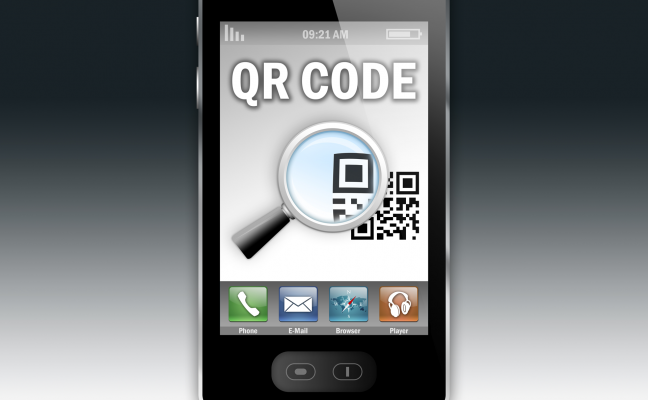Are you currently using QR codes on your direct mail pieces, company literature, or signage? If not, you should be. QR codes are being used nearly everywhere these days. A good example: gone are printed menus, they are being replaced with QR codes usually affixed to the tables and followed up with contactless payments.
QR codes usually link to a website page, but they are being used in more creative ways as well.
- Placing a QR code on a poster allows a reader to ‘Learn More’ and view a video.
- Using a social media QR code to direct people to your profile.
- QR codes that link to a pdf download like an instruction manual for a physical product.
- A pdf QR code on a physical sign outside your business to download an application.
- QR codes can link to an artist’s image gallery or the back of a business card with your contact information.
According to MindFire, “the use cases increase every day. Seeing the popularity and wide adoption of QR codes in recent years, many direct mail marketers have been adding them to their mail pieces as another response channel to connect the physical mail to the web”. If you are not including QR codes on your direct mail pieces, you are falling behind. Recipients expect to find QR codes on their direct mail piece that take them directly to landing pages or at least a home page of your website at a minimum.
Before adding QR codes to your direct mail pieces, take a look at some vertical market examples of the usage of QR codes on direct mail pieces.
- Insurance – 76% scanned the QR code on the direct mail piece
- Higher Education – 64% scanned the QR code on the direct mail piece
- Financial Services – 74% scanned the QR code on the direct mail piece
This should be reason enough to add a QR code to your next direct mail piece. Your recipients expect to find a QR code and will use it broadly, regardless of the vertical market.
Which QR code should you use – static, dynamic, or PQR? You will need to understand the difference between the three before deciding because they are not all the same. MindFire defines the differences for us as follows:
Static QR Code – This is the simplest type of QR code. Static QR codes contain a fixed amount of information that can be accessed by scanning the code with a smartphone or other device. Static QR codes can be used to direct people to websites, provide contact information, or distribute digital content (such as coupons or videos).
Dynamic QR Code – Dynamic QR codes are similar to static QR codes, but they allow you to change the underlying data without having to generate a new code. This is useful if you need to update your contact information.
Personalized QR Code – PQR codes allow you to embed a unique URL personalized for each recipient. You create a different image for each individual with a unique URL embedded for that person. This allows you to gather robust data from each responder.
Each type of QR code has positives and negatives associated with it.
Positives
- Static – Easy to generate. Easy to use on print pieces.
- Dynamic – You can change the destination URL after a QR code image is created or printed on your piece.
- Personalized – You can create a personalized experience for each recipient. Powerful analytics. You know exactly who scanned your QR code.
Negatives
- Static – Limited tracking analytics. You don’t know who scanned your QR code.
- Dynamic – Limited tracking analytics. You don’t know who scanned your QR code. You rely on a 3rd party short URL service that redirects to your destination URL.
- Personalized – You need a tool to generate a unique URL and QR code image for each recipient and a data analytics provider to deliver robust analytics.
You need to first decide how much response information you need, how much flexibility, how much personalization, and then evaluate what are your current capabilities.
In summary, you should be using QR codes at all on your direct mail pieces. QR codes are being used nearly everywhere these days. By using a QR code on your direct mail piece, you are making it easier for your recipients to respond or engage. The recipient can just take out their cell phone, scan the QR code using their camera, and go directly to your designated landing page. You are now making your direct mail somewhat ‘clickable’.
To learn more about the three types of QR codes and their application on direct mail pieces, contact your Think Patented account executive or call 937.353.2299.
